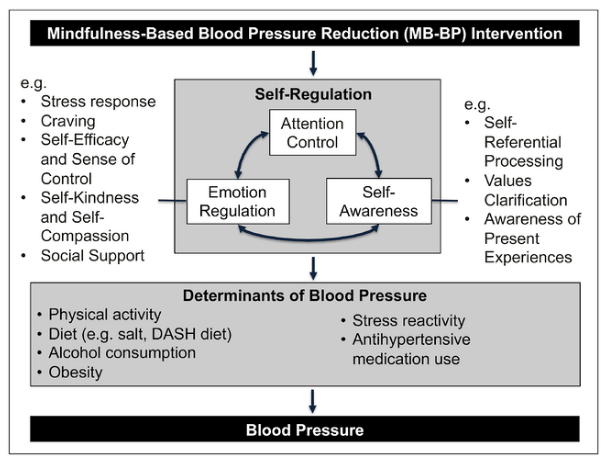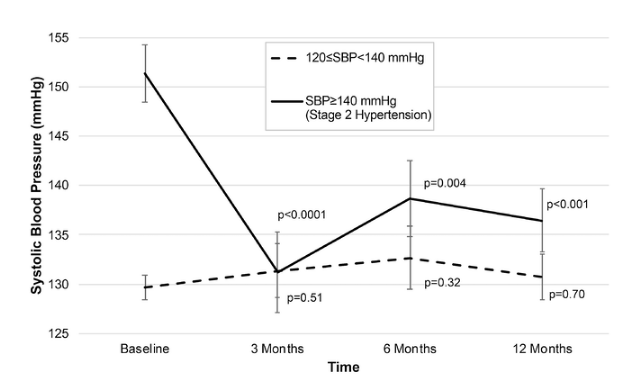
11 Aug The Relationship Between Mindfulness and Reduced Blood Pressure
Mindfulness—including practices such as yoga, journaling, meditation, and more—has surged in popularity in the last several years. People typically seek out these activities to control stress and improve mental and emotional wellness, but with limited research on the physical impacts of the practice and no reimbursement incentives from health plans for prescribing it, few physicians suggest patients engage in mindfulness exercises. Research from Brown University demonstrates the value of mindfulness and as a result, builds a case for companies to include it in their employee wellness programs.
The study examined the potential of practicing mindfulness to lower blood pressure in those struggling to achieve healthy levels. The results showed that an eight-week mindfulness-based program could lower their high blood pressure substantially, as well as maintain those lower levels a year or more. This can be significantly beneficial to U.S. workers and productivity, as roughly a third of the American adult population struggles with high blood pressure. Only about half of those affected manage to control their blood pressure with diet, exercise, and medication. Utilizing mindfulness practices can be another effective tool to get more people to lower their blood pressure, while simultaneously minimizing their risk of heart disease and stroke.

Previous studies have looked at the relationship between mindfulness and blood pressure—but those did not tailor the program specifically for high blood pressure, and they produced mixed results. However, in this study researchers designed a program aimed specifically at lowering blood pressure. They took a widely-used mindfulness curriculum that included both weekly group instruction and at-home practice sessions and refocused the weekly instruction to examine behaviors (such as inactivity or eating sweets) that specifically contributed to high blood pressure.
Participants in the study were given questionnaires and had their physical activity level, diet, body mass index, stress, alcohol consumption, medication use, and blood pressure measured at four different points: before the program began and at three, six, and twelve months after it ended. All 43 participants reported lower stress levels, and many showed improvements in activity level and diet. After one year, they had lowered systolic blood pressure by an average of six points and diastolic pressure by an average of one point.

Taking These Wellness Practices Seriously
These findings—as well as the dozens of recent scientific studies examining mindfulness—have the potential to change the way that mindfulness is perceived. Traditionally, mindfulness practices have been considered not as legitimate as Western or modern medical establishment practices. Measuring the physical, tangible benefits of these practices should help elevate their importance from just another aspect of wellness to proven medical treatment. However, mindfulness is still difficult to quantify and its study faces challenges. Unlike a drug or a treatment that can be compared to a placebo trial, mindfulness practices are more difficult to investigate in a controlled environment. Scientists may need to develop different metrics altogether in order to better investigate these practices.
Don’t Underestimate the Power of Mindfulness
Given the lack of credible medical information available, mindfulness practices are likely under-utilized by doctors and health professionals. Even though mindfulness activities themselves are a popular commodity in the wellness industry, it is not a field that generates income in the medical community and may not be “prescribed” before other standard treatments. Still, many people without access or knowledge of these practices may be able to benefit from them. This is where an employee wellness program can step in and provide these impactful resources and tools. Adding mindfulness to a wellness program has the potential to benefit employees in ways beyond just controlling their blood pressure. It can help with chronic pain, managing stress, improving diet, and quitting smoking and other bad habits. Additionally, many employees expect these resources, as the demand for mental health support rises. While medical researchers may be struggling over the specifics around the pros of practicing mindfulness and meditation, for many, it is already a valued component of a healthy lifestyle.
